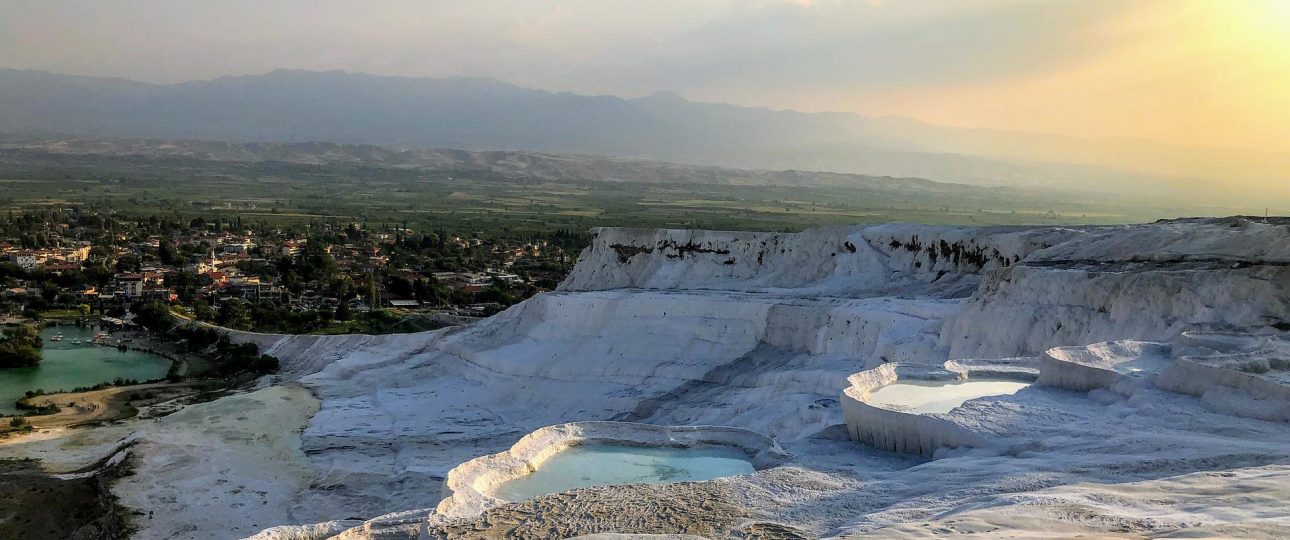FAQs about Pamukkale
What to see when visiting Pamukkale?
With a varied list of attractions from historic to natural, there are a lot of things to do, in Pamukkale that will keep you busy. A minimum of 2 days’ stay is recommended if you want to see the area and not just the Pamukkale Travertines.
Which natural places does Pamukkale offer besides the white travertines?
Pamukkale area is blessed with her thermal waters and brings us to another lovely place. Give your body and soul treatment and enjoy the red water natural hot springs located in the little village of Karahayit which is situated 8 km from Pamukkale. Karahayit has started to be known for its rust-red hot mineral water of 40 degrees Celcius and kept getting well-known by the public.
Did you know that we do have a smaller cousin of Pamukkale undergrounds, and where all starts? Well, Kaklik Cave is similar to Pamukkale and is hidden undergrounds, which offers a nice surprise to the visitors. Visit Kaklik cave which is one of the best caves in Turkey that offers an unusual underworld.
Experience the naturally beautiful Honaz Goz National Park which has beautiful landscapes and is a geological marvel. If you are a lover of nature, go on a picnic at the Karahayit Aglayan Kaya waterfall and trace your way along the Keloglan Cave.
Which Historical Places does Pamukkale offer besides Hierapolis?
Another place to visit when you are in Pamukkale is Laodicia which carries the ruins of the city from the 4th Century. With most of the ruins successfully restored, the place looks gorgeous and is the ideal place to click pictures. Is also a place mentioned in the Book of Revelation.
In the upper valley of the Morsynus River in southwestern Turkey is the world heritage site Aphrodisias. The site consists of two components. On the one hand the archaeological site of Aphrodisias, and on the other hand, the marble quarries north of the city. The Temple of Aphrodite dates back to the 3rd century BC. The city was built a century later. Aphrodisias’ wealth came from the nearby marble quarries and the art produced from them by her sculptors. The city’s streets are arranged along various civic structures, such as temples, a theatre, an agora, and two bathhouse complexes. This is best to visit Pamukkale with a daily Aphrodisias Tour from Pamukkale.
Which are the handcrafted products Pamukkale is also known for?
Pamukkale and Denizli are known for the finest towels and bathrobe production in the world. The textile industry in Denizli grew rapidly in the 1980s and 1990s making itself a place in the domestic market and for export. Another forgotten product these days but still fabricated in the area are the finest handcrafted cooking pot and pans in Copper for high-rated Stars Hotels and Restaurants in the world. Both places are well worth visiting when you are a few days in Pamukkale
Does Pamukkale have Wine production?
Yes, the Pamukkale Winery was founded in 1962 in the north of the province Denizli in the city of Guney. Production capacity is approximately 4 million liters per year and the Pamukkale Winery has achieved one of the most modern arrangements between Turkey and Europe. Since 1989, 20% of Pamukkale Winery’s wine production has been for Germany and France, and also exported globally. As a traveler, you can visit those places and enjoy a wine taste tour.
What to expect when I visit Pamukkale?
Pamukkale offers of course much more to visit but here we do have the most important places to visit Pamukkale with confidence.

